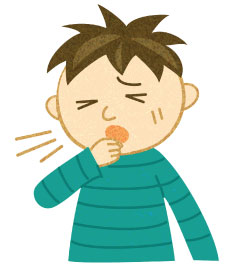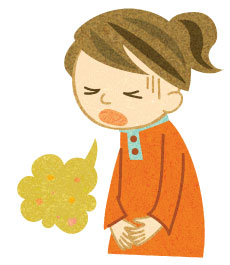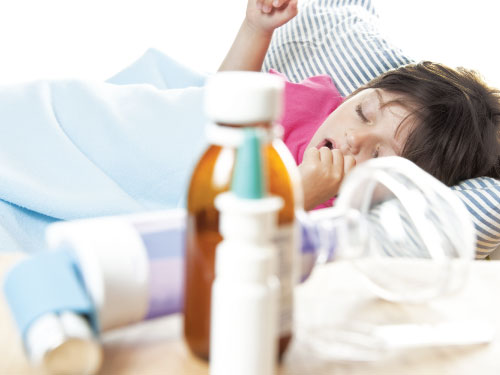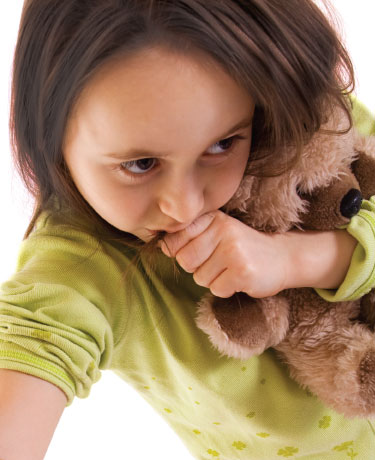Have you ever found yourself asking questions like, “My baby wheezes at night, is she asthmatic?”, or “why does my child seem to have difficulty in breathing during playtime, it’s some kind of exercise-induced asthma right?” or any other number of questions related to your child’s respiratory conditions and your thoughts on it being affiliated to asthma. According to the World Health Organisation (WHO), asthma is the most common chronic non-communicable disease among children.
Symptoms often associated with asthma may include shortness in breathing, chest tightness, coughing and wheezing. More often than not, parents who observe these symptoms assume their child is asthmatic and are concerned about the long term implication of the illness.
What You See Isn’t (Always) What You Get
Diagnosing asthma especially in young children and infants (those below the age of 6) may be quite difficult. This is mainly due to the fact that asthmatic symptoms are mimicked by those of various other health conditions. For example, viral bronchiolitis which demonstrates symptoms of coughing, wheezing and difficulty in breathing or vocal cord dysfunction (VCD) which has most if not all the symptoms of asthma are prevalent in children and young adults. In fact, even a common cold or respiratory infection can cause wheezing in children with particularly small airways.

Babies and infants are usually vulnerable to these and other similar viral infections mainly because their immune system has not yet fully developed. They get their protection mostly from their mother’s antibodyrich breast milk and of course through scheduled introduction of vaccines and immunisation regimes.

Surprisingly enough, two thirds of children with wheezing or other asthmatic-like symptoms, outgrow them as time passes. So the good news is most wheezing illnesses are transient and are expected to disappear as the children grow older.
Time Will Tell The Tale
As your child gets older (around the age of 5-7 years old) defining asthma becomes much easier and the signs and symptoms are better defined for a conclusion to be drawn. Diagnosis in older children may involve lung function testing (spirometry), a look at the medical history of the parents and tests for evidence of allergy.
Diagnosing asthma in younger children and infants is more difficult as virus associated wheezing is highly prevalent in this age group. The following criteria may indicate a higher likelihood for asthma in wheezing children:
- Whether one of or both the parents have a history of asthma or eczema.
- The presence of an allergic response to triggers or irritants.
- Whether wheezing persists in the absence of an infection or cold.
Parents should be cognisant of the fact that doctors, specialists and paediatricians need to ascertain that the child has the specified criteria before actually diagnosing asthma and the process of diagnosis may take time. Incorrect diagnosis may cause distress within the family and affect their daily lives. Furthermore, a precise diagnosis (if indeed your child is asthmatic) helps the doctor to both plan and deliver the best possible options for a long-term management of the condition.
Routinely associated asthma triggers include:
- Hair or dander
- Dust, mold, and pollen
- Aspirin and other medicines
- Cold air
- Chemicals in the air or in food
- Tobacco smoke
Ease The Wheeze
A lot of children who have asthma develop their first symptoms before 6 years of age and are not positively diagnosed until later on. However, you won’t need to wait for 6 years to actually get your child’s first prescription and start treating the symptoms. Doctors are aware that prolonged inflammation may cause permanent damage to the lungs, and thus, may prescribe anti-inflammatory medications in frequently wheezing children. Under-diagnosis of asthma was a major concernof experts in the past but, with new knowledge on childhood wheezing illnesses, over-diagnosis and over-treatment are now to be avoided.

Therefore, until a concrete assessment is made, doctors may prescribe inhaled asthma medications that are generally safe for infants and children, in order to see if their symptoms subside. These medications are more commonly used intermittently or on a short term basis. The decision to use longer term treatment regimes will have to depend on longer term observation of symptom patterns and identification of criteria that are more consistent with asthma.
Don’t be too quick to jump to conclusions. Doctors aren’t miracle workers and they can’t pull rabbits out of their proverbial hats willy-nilly. Patience and continued emotional and psychological support for your child is what is more important. That being said, you should also consider consulting a paediatric respiratory specialist regarding your child’s condition and get an expert’s feedback on managing these asthmatic symptoms.
Although asthma cannot be cured, its symptoms can effectively be prevented and outbreaks and/or attacks properly controlled following a good management plan. The plan should be reviewed by you as parents and anyone else taking care of the child. Caregivers should understand the plan and be able to act accordingly if in the event that an attack does occur.
An educational contribution by Malaysian Paediatric Association.






Comments